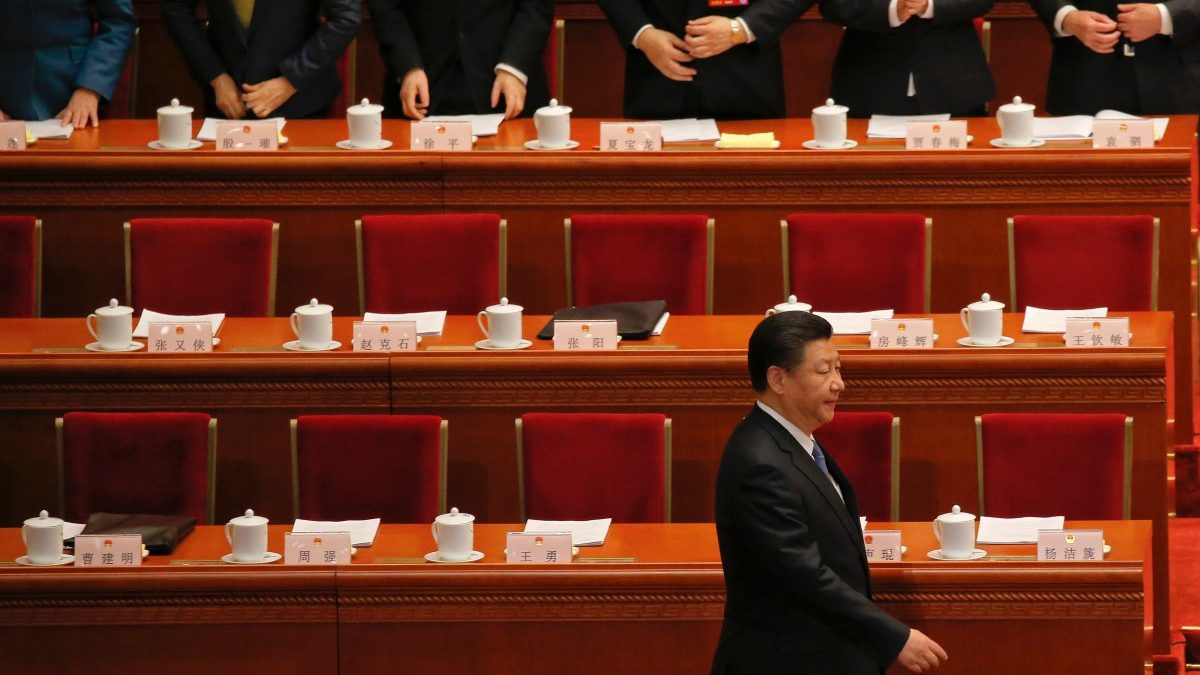The turmoil in the organisational structure of China’s military continues. The latest is the disbandment of one of the main forces that was formed less than a decade ago. On April 19, the PLA Strategic Support Force (PLASSF) was disbanded and three new forces were formed, viz, the Information Support Force (ISF), the Aerospace Force, and the Cyberspace Force, with the already established Joint Logistics Support Force forming the ‘fourth arm’. The PLA is thus now reconfigured as “four services [army, navy, air force, and rocket forces] and four arms [ISF, aerospace, cyberspace, and joint logistics]”
Turmoil in the nearly 97-year-old China’s military is not unknown, however. As it brought the Communist Party into power in 1949, the Red Army turned into the People’s Liberation Army (PLA), which is identified as the Communist Party’s wing but known to bargain hard for privileges, defence budgets, representation, and participation in the decision-making bodies of the country.
Given its value as the “protector” of the party, the PLA sometimes showed its teeth or even threatened to slow down. In mid-1960s, it exhibited shantouzhuyi (mountain-topism)—sitting on the top of the mountain and out of the reach of the party’s control mechanisms—in other words, becoming “independent”.
In other times, it demanded its pound of flesh by filling up positions for the children of the Generals. Increasingly, it demanded higher defence allocations, specifically since the 1990s, making it the second largest spender in the world.
China’s Communist Party is aware of the PLA’s praetorian demands, leading to its gradual loss of power. Hence, the party has struck back periodically to keep the military confined to the barracks and assert its “absolute power".
Impact Shorts
More ShortsMao Zedong disbanded ranks and military grades in the mid-1960s. Deng Xiaoping accused the PLA of being “bloated, lax, and undisciplined” in 1979 and launched a programme for reorganising towards a “lean and mean” armed force. Deng disbanded over a million troops in the process, including Maoist elements.
Xi Jinping dismissed or even arrested several thousands of officers and soldiers in the name of curbing corruption, netting Jiang Zemin’s proteges like Guo Boxiang, Xu Caihou, and others. Last year, China’s defence minister, Li Shangfu, disappeared from public view, only to be replaced after several months by Deng Jun.
Rocket forces commander Li Yuchao, its commissar Xu Zhongbo, and its deputies Zhang Zhengzhong and Liu Guangbin as well were shown the door. PLASSF commander Ju Qiansheng went missing. The Aerospace department’s officials, Liu Shiquan, Wu Yansheng, and Wang Changqing, were dismissed. Rampant corruption and dereliction of duty in PLA forces were seen as a threat to the civilian leadership under Xi and to the combat requirements.
Xi launched a major reorganisation of the PLA in December 2015 to “fight and win” future warfare based on China’s core interests and acquiring regional and global hegemony. At the 19th Communist Party Congress, 2017, Xi ordered the PLA to become a “world class military” by 2049. The rump in the PLA is not tuned into these new requirements, leading to further reorganisations.
In pursuing global ambitions, Xi in December 2015 reorganised the PLA into five theatre commands, brought the four “General” departments (of staff, political, logistics and armaments) and the newly established PLASSF under the control of the General Office of the Central Military Commission (CMC). Yet, the PLA doesn’t seem to be matching Xi’s ambitions of becoming an expeditionary force firmly under his control.
Xi realised a “world-class military” cannot be raised with so much inefficiency and corruption in the PLA forces. Moreover, some of these units also went beyond their brief, blackening the political leadership’s face. The Chinese balloon incident in early 2023, which was shot by the United States, exposed PLASSF’s vulnerabilities and command and control problems. Likewise, the Yuan Wang 5 surveillance ship incident at Hambantota alerted India to the PLASSF’s ambitions to enter the Indian Ocean. China’s information operations across the world depleted its soft power.
It is also realised that the ISF should be a separate force, directly under Xi, as the demands of information warfare increased recently after the Ukraine and Israel-Palestine-Iran crises and cannot be subsumed under the overall umbrella of the PLASSF. Also, despite extensive and threatening deployments in the Taiwan Strait since August 2022, the PLA forces, including the PLASSF, were unable to make a significant dent in the region. The Galwan incident with India also exposed China’s limitations in information dominance and logistics support.
Xi Jinping’s tenure as Chairman of the all-powerful CMC witnessed increasing turbulence for the PLA forces, in part due to his global ambitions and the inability of the PLA to adjust to such demands. While Xi attacked rampant corruption in the PLA, specifically targeting rival political factional officers loyal to Jiang Zemin, recently this campaign targeted his own appointees, highlighting vulnerabilities in civil-military relations.
The newly formed PLA ISF that was carved out of the PLASSF on April 19 has Bi Yi as the commander and Li Wei as political commissar. This reorganisation provides more for specialisation under the direct leadership of Xi. Given the lack of transparency in the PLA, it is hard to predict if further purges would be carried out in the “four services and four arms” of the PLA. The resulting uncertainty in the PLA is detrimental to peace and stability in China and beyond.
The author is Professor in Chinese Studies at JNU. Views expressed in the above piece are personal and solely those of the author. They do not necessarily reflect Firstpost’s views.


)

)
)
)
)
)
)
)
)



